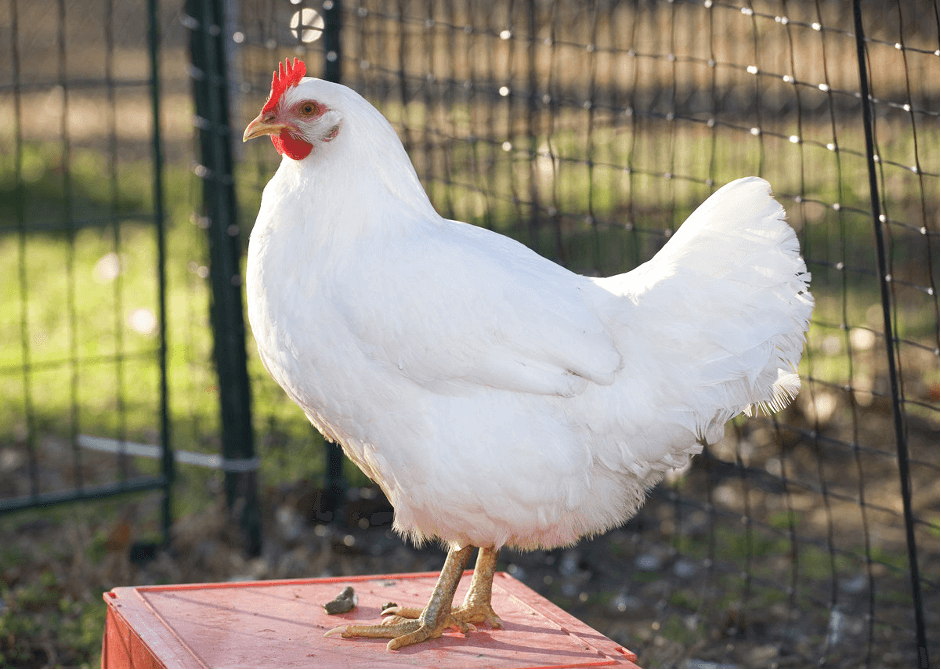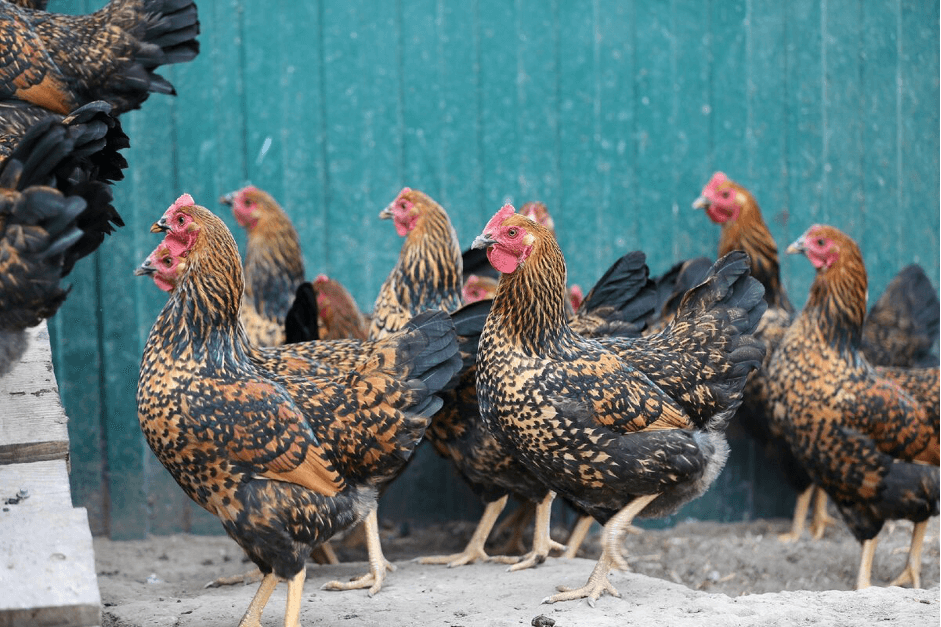Any owner of a private home or cottage can provide himself and his family with fresh chicken eggs. However, the success of home poultry farming is based on the correct choice of breed or cross of laying hens.
The possibility of creating conditions for keeping poultry should be taken into account; ideal conditions require certain and sometimes considerable costs. The problem of nutrition is easily solved by purchasing specialized feed, but ensuring temperature, lighting, ventilation, and protection from diseases will take a lot of time and money. Therefore, when buying chickens, you need to pay attention not only to productivity but also to unpretentiousness in keeping, as well as disease resistance.
Purely egg-laying chickens can produce 200–400 eggs per year, while the meat of laying hens has a low taste and little of it in the carcass since the weight of the chicken rarely reaches 2 kg. You can choose domestic or foreign egg and meat-egg breeds and crosses for timekeeping.
Important! It should be noted that if you plan to breed yourself, it is better to choose a breed since getting full-fledged offspring from crosses (hybrids) of poultry is impossible.
Russian White
Resistant to cold and disease, agile and unpretentious chickens with a snow-white color and a large red comb. The breed has good egg production – from 200 to 250, and sometimes up to 300 eggs per year. The weight of chickens is up to 1.8 kg. Russian White is the result of crossing Leghorn roosters with local outbred chickens, which resulted in laying hens that retained the positive qualities of Leghorns but were calmer and non-aggressive. A subspecies of this breed, the Russian Snow White, has increased resistance to cold weather.

Pushkinskaya
The breed, bred in the city of Pushkin in 2007, is distinguished by two selection lines – from poultry farmers from Sergiev Posad and St. Petersburg, they differ in color. Chickens near Moscow are striped and motley, and their St. Petersburg “relatives” are black and motley. Pushkin’s selection is based on the Australian Australorp and Leghorn. Chicken weight is up to 2.5 kg, egg production is from 210 to 260 eggs per year. The hen lays eggs all year round, except during the molting period, maintaining good egg production for up to 3–4 years. The eggs are white or light beige, weighing 60–65 g; in birds older than one year, eggs sometimes reach a weight of 75 g.
These chickens cannot fly, they run poorly, and in case of danger, they do not run away, but hug the ground, which is very convenient for slaughter. The calm nature and tasty meat are additional arguments in favor of breeding this meat and egg breed at home.

Kuchin Anniversary
The breed was bred at the Soviet poultry plant “Kuchinsky” in 1990, it was the year of the enterprise’s twenty-fifth anniversary, so the chickens were called Kuchinsky Jubilee. The breed is based on several foreign lines – Leghorns, Australorps, Plymouthrocks, New Hampshires, and Rhode Islands, as well as local Oryol Livenki.
Despite numerous crossings during the creation of the breed, it does not degenerate. Kuchinkas have a strong constitution and considerable weight: chickens – up to 3 kg, roosters – up to 4 kg. The color of laying hens is motley, and that of roosters is red; puberty occurs at the age of 5.5–6 months. On average, laying hens lay 180–240 light brown eggs per year; they are capable of laying eggs in winter at temperatures ranging from +5°C. Developed maternal instinct allows one Kuchinskaya Klush to raise to 30 chickens.

Zagorskaya Salmon
Soviet breed, bred in the Moscow region in 1955. Breeders of the Zagorsk Institute of Poultry Breeding used both domestic breeds – Russian Whites and Yurlovsky Vociferous, and foreign ones – New Hampshire and Rhode Island. As a result, we obtained a breed of chickens with a calm character, unpretentious to feed, and external conditions.
The egg production of the Zagorsk salmon is estimated as average – from 190 to 210 eggs per year, the eggs are light brown or beige, large – up to 75 grams or more. The weight of chickens is up to 2.2 kg, and roosters – up to 3.7 kg. The bird begins to lay eggs at the age of 5 months; it is characterized by thick light beige plumage with a soft pink (salmon) tint on the wings, a short black tail, and a leaf-shaped crest.

Leghorn
Leghorn chickens, popular since the 19th century, have become the basis for the development of many breeds and crosses, due to their high productivity – 260-300 eggs per year. Laying hens mature early and begin laying eggs at 4–5 months. The weight of chickens is up to 2 kg, roosters – up to 2.5 kg. Chickens are very active, and constantly on the move. The characters are quite calm, they get along well with each other. It is very important to take into account that the hen is shy during egg laying. There is no hen instinct; breeding can only be done using incubators or laying eggs on other breeds of chickens. High egg production occurs in 1 year of life; the herd needs to be renewed every 1.5 years. They have low immunity to diseases. Most often the color of laying hens is white, but variegated colors are also quite acceptable. A characteristic feature is a triangular comb of bright red color hanging to one side.

Loman Brown
This cross was bred in Germany in 1970; it is unknown what breeds are the basis; German breeders still do not disclose their trade secrets. Cross-breed chickens are easy to separate by gender due to the darker color of the chickens. Loman Brown hens mature quickly and begin laying eggs within 4–5 months. The productivity of chickens is very high, they produce 310–320 eggs annually, with good quality eggs weighing 60–65 g. The weight of chickens is up to 2.5 kg, roosters – up to 3 kg. Loman browns are hybrids and can be reproduced in their pure form only in poultry farms. The exterior is strong with a large prominent tail, the plumage is red-brown, and the average carcass weight is about 1.8 kg. Cross is rightfully classified as a meat and egg product. Among the disadvantages, we can mention the short period of peak productivity, usually no more than 2 years.

Dominant
Czech cross, which includes several subspecies, chickens differ in the color of feathers and eggshells. The most popular laying hens have silver, blue, black, and speckled plumage. The egg production of the cross is high, birds can lay up to 320 eggs per year, and the largest eggs are in black chickens. Laying hens that reach a weight of 2 kg begin to lay eggs at 120–150 days; the maximum productivity of the cross lasts up to 3 years. The weight of chickens is up to 3.5 kg, roosters are up to 3.5 kg.
Dominant chickens tolerate low temperatures well; when keeping them, it is necessary to provide walking and adequate nutrition. Although it is believed that birds are not particularly demanding of feed mixtures, if there is a lack of calcium and protein, productivity is significantly reduced.

Hamburg
This breed has a solid history, dating back over 300 years. Chickens were bred in Germany, using breeds of various styles – Asian Cochins, Yorkshire pheasants, and Spanish blacks. As a result of many years of work, two lines of the Hamburg breed were obtained – standard and dwarf.
Standard chickens of this breed weigh no more than 1.8 kg, the productivity of laying hens ranges from 170 to 220 eggs weighing about 50 g, and laying begins at the age of 4–5 months. Key productivity occurs in the first year of development. There is no mother hen instinct. The meat of laying hens is tender and tasty, so they can be classified as meat and egg breeding. The weight of chickens is up to 2 kg, roosters are up to 2.5 kg.
The elongated, fit exterior, beautiful rose-shaped crest, and wide variety of colors attract the attention of lovers of ornamental birds. Chickens can be black and white with blue and silver tints, respectively, and individuals with golden-black, striped-white, and speckled plumage are also common.

The birds have a non-conflict character, they get along well with other inhabitants of the household; it is better to feed them with factory-made feed with an optimal content of vitamins and minerals.
Important! Hamburg chickens love a lot of space and spend most of their time outdoors, but since they fly well, the exercise yard should be closed at the top.
Ameraucana
This breed is not often found in Russia; it was bred by American breeders in 1976 by crossing Araucana chickens with local egg-laying breeds. Laying hens lay from 210 to 260 eggs weighing 60–65 g; the eggs have an unusual blue tint; chickens are sometimes called Easter eggs for this feature. Birds begin to lay eggs at the age of more than 6 months. There is no brooding instinct. Ameraucana meat is tender, reminiscent of quail; carcasses can weigh up to 2.6 kg.
Among the characteristic features of the breed, one can highlight the presence of beards, sideburns, and pea-shaped combs in laying hens and roosters. The color standard includes 8 colors – white and black, silver and blue, dark yellow and red-brown, and wheat and wheat blue.

Australorp
Australian chickens of this breed have been known since the 19th century; they combine good egg production, up to 220 eggs weighing 55–65 g, and high-quality meat. Chickens begin to lay eggs at the age of 4 months, the color of the eggs is brown.
There are two main lines of color – black and marbled; there are also varieties with blue, white-gray, golden, and red feathers. The weight of a Black Australop hen is 3–3.5 kg, the rooster is 1 kg heavier. Chickens have a leaf-shaped comb and bright red earlobes, black legs, and a wide tail.
The character of purebred birds is very calm, they do not start fights and easily find contact with each other. Chickens do not require special conditions for keeping, but so that they do not reduce productivity, it is necessary to maintain a temperature of +12°C and above. Also, egg production is greatly influenced by the quality of feed; the best option would be specialized feed mixtures.

Sussex
An English breed known since the beginning of the 19th century, Sussex is the result of crossing outbred chickens with Dorking and Brahma chickens. Laying hens have a relatively low egg production – from 150 to 200 eggs per year, the eggs are brown with an average weight of 60 g. The weight of the “English” carcass is about 2.8 kg, the meat is of good quality.
Chickens have a characteristic white plumage, with a black rim around the neck, the tail also has black feathers, this coloring makes it easy to identify the breed. The bird’s head is small with a leaf-shaped red crest and lobes.
Sussex birds are peaceful, do not require special care, they have good health and high immunity. Chickens love walks, devoting them to searching for additives to the diet, which should be varied if possible.

Amrox
The breed is originally from America, bred in the mid-19th century by crossing Dominican and Javan black chickens, as well as Asian Cochins. Birds belong to the meat and egg direction. Laying hens weigh up to 3 kg and lay up to 210 eggs per year.
Amrox chickens have a “cuckoo” coloration in the form of black and white stripes. The comb of chickens and roosters is leaf-shaped, serrated, and bright red. The breed is unpretentious; chickens lay eggs well in a small household. The disadvantage is increased sensitivity to cold and noise.


